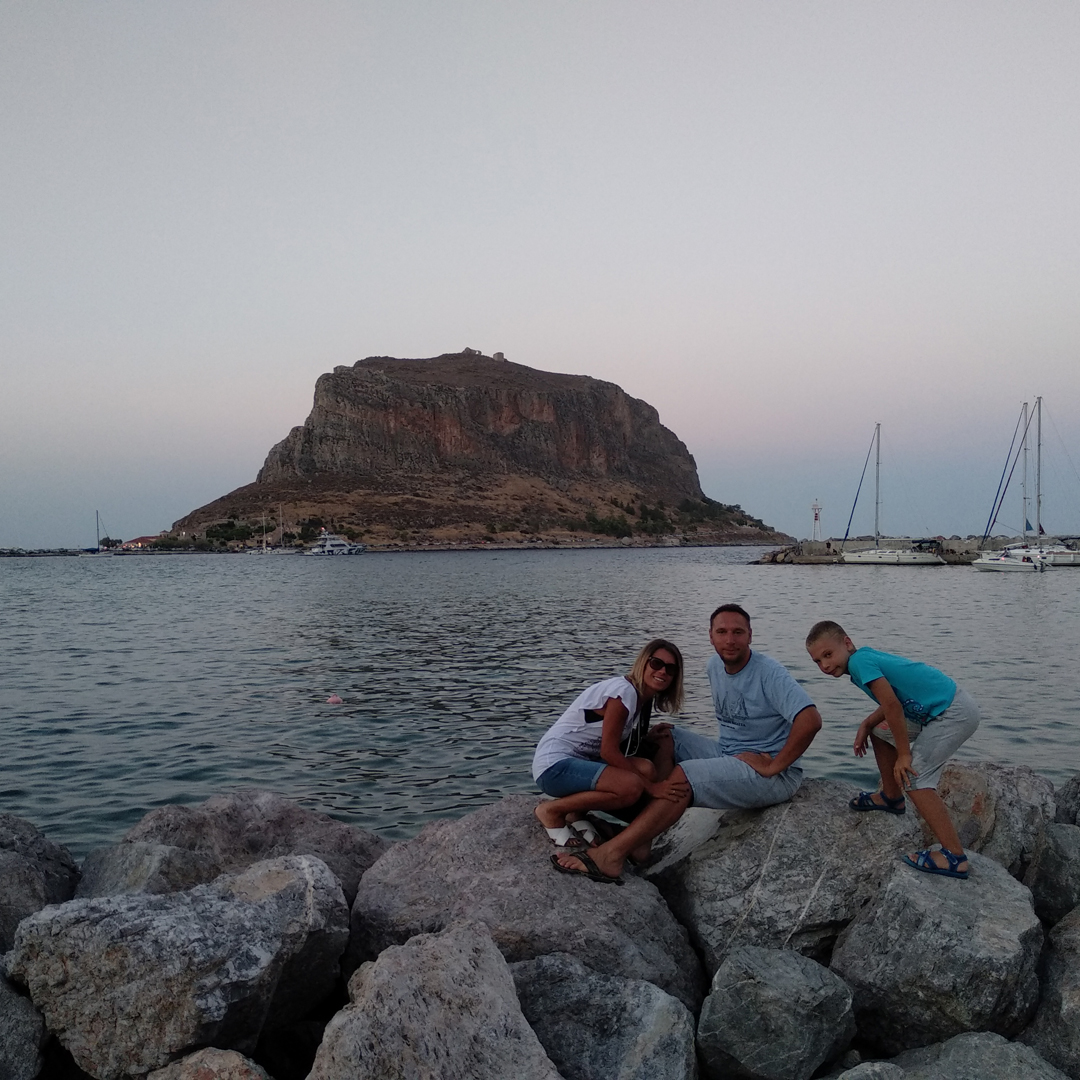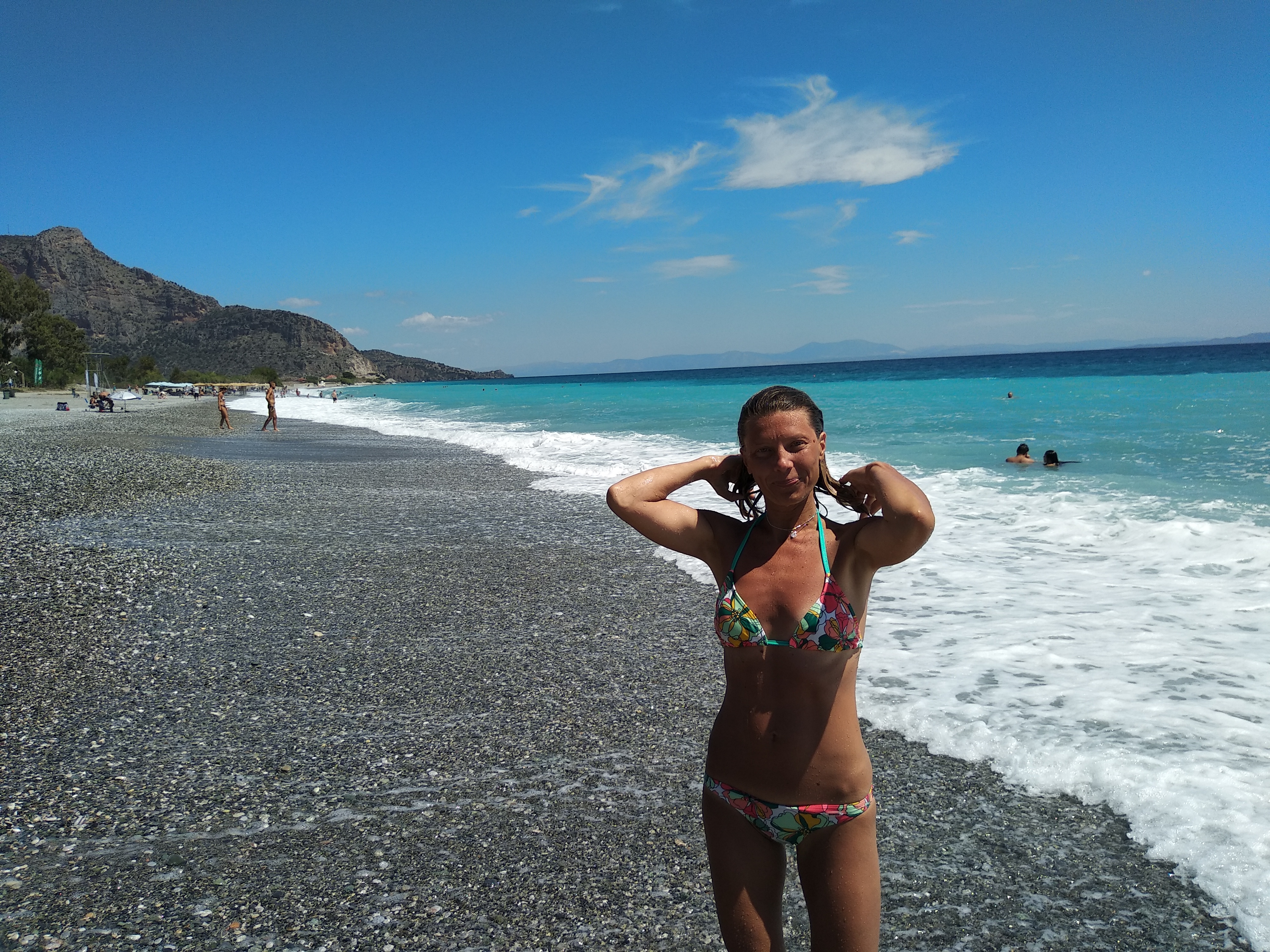
Leonidio & Gates of Monemvasia
We continued our journey to the south, after 4 hours of gentle sailing we saw shores of Leonidio. Rough night in Spetses left consequences to our ropes so I had to take care of it.
We arrived just in time for evening swim and peaceful night in harbor. Marine in Plaka is small and well protected with breakwater from south-west. It is a good hideout in time of meltmi winds.
Leonidio
Today, Leonidio is a lively and colorful town, especially in summer months, as a result of newly developing tourism. On the seashore is small port, with a couple of taverns and two markets useful for purchasing add-ons to the food and drinks stock.
We were lucky to have some nice waves here. In windy days this place can give satisfaction to people who like waves, and those who don’t. On the opened side there are waves and just a cross the marine, water is still with nice place for beach volleyball.
We have opted for opened side and beautiful turquoise sea. We enjoyed waves to the point where we became children again. Enjoy the sound of the waves and long pebble beach.

The beauty of Leonidio’s Plaka was accompanied with beauty of my timeless wife. Ohhh, lets try that again. The beauty of Plaka was accompanied with beauty of my timeless wife.
Monemvasia
Strong winds over few days raised waves on the sea, so our journey to Monemavasia, the Greek Gibraltar, as some call it was shaky and bumpy.
Monemvasia is a small town in Lakonia, located on the island of the same name, not far from the southeastern coast of Peloponnese. It is connected to the mainland by a narrow 200 meters long bend. Its name comes from the Greek words “mone” and “emvasia” which means “unique entrance”. Its Italian name Malvasia gave name to this favorite type of wine.

The city belongs to the district of Lakonia and the Mistra is a protected city under the protection of UNESCO.
The island of Monemvasia was separated from the mainland by an earthquake in 375 AD. The majority of the island’s area is a plateau about 100 metres above sea level, and the town of the same name is built on the slope to the south-east of the rock, overlooking Palaia Monemvasia bay.
On the road to old town we visited what you may call a great looking graveyard. The small cemetery holding the bones of one of Greece’s most popular poets, Yannis Ritsos, born in the town in the early 20th century. It looks like a good compromise for sailors burial.
Coming to the gates of Monemavasia gave us chills down the spine, we heard a lot but didn’t had an idea what is behind.
Kato Poli
Many of the streets are narrow and fit only for pedestrian and donkey traffic. Here visitors can rest in one of the many hostels, restaurants, bars and shops. They offer a uniquely authentic experience, retaining the architectural style of the old town. If you follow the central path starting from the gates of Monemvasia, you will reach the central square, named Kato Poli or Lower Town. Contrary to the Higher Town, the Lower Town buzzes with life and energy.
In the square, lies the church of Christ Elkomenos, devoted to the Suffering of Christ. Inside the church one can admire Byzantine icons dating back to the 17th and 18th centuries. There are also marble sculptures from the early Christian and Byzantine times. Monemvasia passed through Byzantine, Vatican, Frank, Venetian and Ottoman hands before becoming part of modern Greece
From the 10th century AD, the town developed into an important trade and maritime center.
Although only about a dozen people live year-around in Monemvasia’s old city today, compared with perhaps thousands during its 12th-century heyday, the town remains both magnetic to visitors and stubbornly ensconced in its past. The rush of visitors begins with the Orthodox Easter in spring and lasts well into October.
Ano Poli
Today Monemvasia is divided into two towns: Ano or Higher Town and Kato or Lower Town.
Ano is the original Monemvasia built on higher grounds to avoid pirate attacks. It was later fortified by Byzantines and Venetians. Nowadays it is uninhabited but is open to visitors who want to catch a glimpse of its past glory. Its entrance is overlooking Mirtoo Pelagos.
There are 40 churches within castle walls. Several water reservoirs as well as evidence of water delivery canals.
The most impressive building in Ano is the Church of Hagia Sophia. It is one of the most important examples of Byzantine architecture in Peloponnese, which reflects the style of churches built at the same time throughout Greece and in Constantinople.
After almost an hour of walking, there she was. Its location on the edge of a steep cliff adds a bit of drama to the simple, clean lines and light dome of the church inspiring awe among its visitors. Apart from the 14th century frescoes inside the church, you will want to take a picture of the village below when you step outside. The view from the church yard is literally breathtaking.

Try heather flavored honey and Malvasia wine made from sun-dried grapes, which was famous throughout Europe in the medieval times. Alternatively, follow the example of the locals and partake of bread and olive oil.
After enjoying the spectacular sight from the top of the hill it was time to go. Coming down the rocky stairs can be dangerous, be careful! Upon coming back to boat we saw beautiful example of wind painting on bay surface.

It was time to move on, so we untied our ropes, checked some medusas and waved good buy to Monemavasia.



